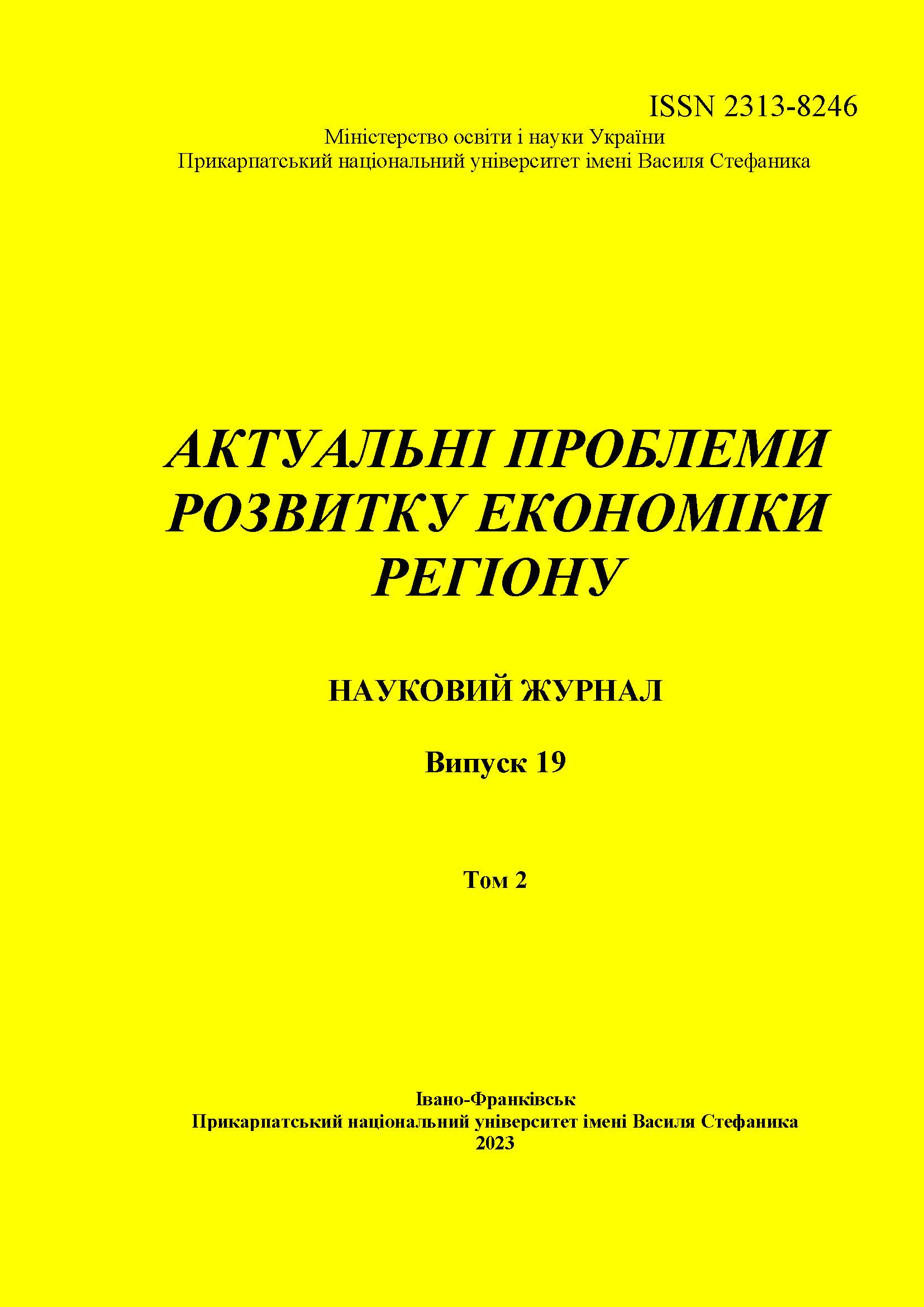INSTITUTIONAL SECURITY OF THE SOCIAL SPHERE OF UKRAINE DURING THE CONDITIONS OF WAR
DOI:
https://doi.org/10.15330/apred.2.19.263-271Keywords:
social sphere, vulnerable population segments, social protection of the people, multidisciplinary mobile teamAbstract
The purpose of writing the article is to study the institutional support of the social sphere of Ukraine in the conditions of war. When writing the essay, general scientific and unique research methods were applied. In particular, the method of analysis and synthesis was used to study the main functions of the multidisciplinary mobile team. The main results of the functioning of the system of institutional regulation have been established, including the reliability of socio-economic support for persons with disabilities, temporarily displaced persons, etc., their involvement in the field of labor relations, the removal of social tension in the country by providing them with work. This leads to partial satisfaction of the individual needs of disabled people with various diseases at work, temporarily resettled persons, etc. To improve and harmonize the activities of social services, it is proposed to ensure the transparent functioning of institutions within all territorial levels; ensure the coordination of a multi-level system of formation and implementation of state policy in the social sphere, in fact, the formation of a new institutional model, which should provide a living set of tools taking into account decentralization and the powers of state/local authorities. The abstract-logical method was used for theoretical generalizations and the formation of conclusions. The importance of the creation and practical activity of multidisciplinary mobile teams for IDPs under martial law is justified. It is proved that the institutional support of the social sphere plays a unique role in the activities of state and non-state organizations that implement the social direction of state activity. The action of regional social centers was studied. The most significant problems of regional social centers that require immediate solution were identified, in particular: low level of wages of social protection workers; the development of "personnel hunger"; high level of workload and its nature on social security workers; a large number of regulatory and legal acts that contradict each other; insufficient level of provision of the material and technical base. To improve the activities of social services, the following are proposed: An increase in the wages of social service workers; review of the staff of social benefits from the point of view of the quality of their services; application of information technology in the activities of social services; introduction of new relevant areas of work of social services in war conditions; ensuring territorial communities; stimulation of cross-border cooperation of territorial border communities; reviewing the possibilities of collaboration of social services with the public, donor, and international organizations.the decentralization of social services; stimulation of cooperation of neighboring.
References
2. “On Social Services Law of Ukraine. ” The Verkhovna Rada of Ukraine, zakon.rada.gov.ua/ Accessed 12 Feb. 2023.
3. “Monitoring of the social sphere.” Carpathia, carpathia.gov.ua/diyalnist/ekonomicnij-blok/socialno-trudovi-vidnosini/monitoring-socialnoyi-sferi Accessed 12 Feb. 2023.
4. Moskalenko, V. V. “The essence of social protection and its place in the policy of the welfare state.” Scientific notes, vol. 21. Political sciences, pp.41-44, ekmair.ukma.edu.ua/bitstream/handle/123456789/8399/Moskalenko_Sutnist.pdf Accessed 10 Feb. 2023.
5. National Service of Social Services of Ukraine, nssu.gov.ua/ Accessed 10 Feb. 2023.
6. “The procedure for organizing the provision of social services. Approved by the resolution of the Cabinet of Ministers of Ukraine dated 01.06.2020 No. 587.” The Verkhovna Rada of Ukraine, zakon.rada.gov.ua/ Accessed 10 Feb. 2023.
7. Prilypko, S.M. “To the issue of defining the functions of social security law.” dspace.nlu.edu.ua/bitstream/123456789/10620/1/Prelepko.pdf Accessed 12 Feb. 2023.
8. The system of social protection and social security in Ukraine: the real state and prospects for reform. Kyiv, 2009. irf, www.irf.ua/files/ukr/programs_law_areas_publ_2028_ua_law.pdf Accessed 10 Feb. 2023.
9. Smirnova, I.I., Lykhoshva, O.Yu., Rak, N.V., and L.A.Gorieva. “Social protection of the population at the current stage: state and problems in Ukraine.” Economic Herald of Donbass, no. 3 (61), 2020, pp. 205-212
10. “Social and other services, assistance.” drive.google.com/drive/folders/1Kgi_Psbo34kQE6yJmaq4Jdd3hM3Y9Iji Accessed 10 Feb. 2023.
11. Strategy and means of convergence of social security systems of Ukraine and the EU in the process of European integration: monograph, edited by T. G. Vasyltsiva, R. L. Lupaka. Lviv, NNVK "ATB" Publishing House, 2018.
12. Floreskul, N. “The system of social protection of the population as a factor in the formation of the social state.” Bulletin of Kyiv National University of Trade and Economics, no.2, 2009, pp. 34-46.
13. “Emergency non-medical aid: multidisciplinary mobile teams from UNICEF have already helped more than 80 thousand Ukrainians.” Prostir, www.prostir.ua/ Accessed 15 Feb. 2023.
Downloads
Published
How to Cite
Issue
Section
License
- Authors retain copyright and grant the journal right of first publication with the work simultaneously licensed under a Creative Commons Attribution NonCommercial NoDerivs 4.0 Unported License that allows others to share the work with an acknowledgement of the work's authorship and initial publication in this journal.
- Authors are able to enter into separate, additional contractual arrangements for the non-exclusive distribution of the journal's published version of the work (e.g., post it to an institutional repository or publish it in a book), with an acknowledgement of its initial publication in this journal.
- Authors are permitted and encouraged to post their work online (e.g., in institutional repositories or on their website) prior to and during the submission process, as it can lead to productive exchanges, as well as earlier and greater citation of published work (See The Effect of Open Access)


